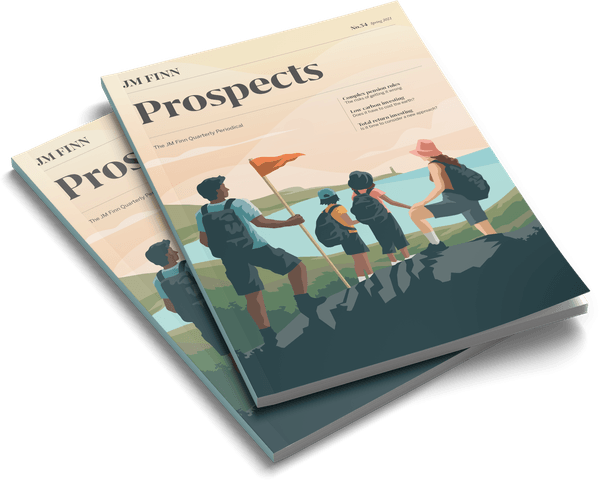AstraZeneca
Price £69.45
52 week high-low £101.20 – £58.71
Net Yield 2.89%
Hist/Pros PER 28.5 – 18.92
Equity Market Cap (M) £92,610
Health Care
Craig Marks, Senior Director, Investor Relations & Tom Waldron, Director of Investor Relations
AstraZeneca’s collaboration with Oxford University on the development and manufacture of a COVID-19 vaccine has meant that the company has been in the news a lot recently. Although a good ‘ethical badge’ for the company to wear, the reality is this will have little impact on the business: Astra has promised to provide it on a not-for-profit basis to developed nations for the duration of the pandemic stage and indefinitely for developing nations. Our conversations therefore focused on more financially meaningful factors, particularly the large-scale acquisition ($39Bn) of rare disease drug company Alexion which was announced in December 2020.
Many investors questioned why the company was making such a large acquisition given the already encouraging prospects for AstraZeneca and their limited presence in immune related rare diseases, Alexion’s focus. They feel they should be looking to make acquisitions from a position of strength and, although they currently only have a small presence in immunology, Alexion’s expertise should help accelerate their research & development pipeline in this therapeutic area. Astra also believe the rare disease market is highly attractive; the niche focus of drugs means they can demand premium pricing and lower marketing costs, resulting in higher profit margins versus the wider pharmaceutical industry average.
More revenue synergies of the acquisition come from bringing Alexion’s established drugs Soloris and Ultomiris to China. Alexion has negligible Chinese sales exposure and Astra believe they can leverage their presence to expand regional sales. In the medium to long-term, Astra are also hopeful they can commercialise a number of Alexion’s own pipeline developments, the success of which is however no sure thing.
Barclays Bank
Price £1.60
52 week high-low £1.66 – £0.73
Net Yield 0.61%
Hist/Pros PER 18.1 – 10.24
Equity Market Cap (M) £28,256
Financials
James Cranstoun, Director Investor Relations, Aftab Khan, Vice President Investor Relations & Benedetta Alecce, Assistant Vice President, Investor Relations
The meeting started with a quick review of consumer behaviour over the last few months and confirmed what we thought: during COVID-19 retail customers had been paying down expensive credit card and other debt, whilst corporates had continued to grab liquidity from government loan schemes with the cash going on deposit.
Bank revenue is mostly driven by the difference between what they pay their depositors and what they charge to borrowers. This is called their net interest margin or NIM. Seeing customers pay down high interest rate credit card debt, whilst at the same time seeing corporates deposit surplus cash is unhelpful for NIMs. Surplus cash, over and above what Barclays had lent out, stood at £151 billion at the time of our meeting. Barclays said the surplus was either left in cash or invested in government bonds and AAA and AA corporate bonds where, as you probably know, returns are pretty derisory. The two year gilt yield is now -0.09%.
Prior to our meeting we had seen mortgage rates increase; which was not what we had been expecting given the large cash surplus that Barclays and other banks had and which they are mostly trying to place in the UK mortgage market. If there was a large supply of bank cash looking for a home in the UK mortgage market, then you would have expected rates to have stayed lower. The reason for the hike in mortgage rates was attributed to operational constraints at some banks whose personnel were busy trying to process government assisted COVID-19 support loans and finance, so they reacted by simply pricing demand away.
Experian
Price £22.73
52 week high-low £31.92 – £18.24
Net Yield 1.59%
Hist/Pros PER 30.4 – 30.92
Equity Market Cap (M) £21, 263
Industrials
Nadia Ridout-Jamieson, Chief Communications Officer
Experian’s traditional business is a credit bureau; a data collection, scoring and reporting entity. What is nice about the credit bureau model is the social benefit gleaned from separate data contributions. Experian’s customers, lenders, each provide Experian with their own partial data records on borrowers. Its credit bureau then aggregates these fractional records to provide a more complete borrower profile helping lenders make informed decisions. This drives a self-reinforcing and enduring loop with lenders continuing to provide new data in return for more accurate credit records.
A key economic moat for Experian versus smaller peers and new competitive entrants is the growing breadth and depth of data collected and the longstanding customer relationships. In the US, this partly explains how Experian is one of the top three credit bureaus, alongside Equifax and TransUnion, in an oligopolistic market structure. However, Experian has long since expanded beyond its credit bureau foundations and shifts increasingly towards data science. Within its business-to-business segment, Experian also provides decisioning software upon which customers can base credit decisions and in health, Experian helps US hospitals better understand customer insurance coverage and improve hospital payment cycles.
We also reviewed Experian’s Tapad acquisition which adds to their existing identity verification and marketing capabilities. Tapad uses a combination of web cookies and device IDs to understand which different internet enabled devices a consumer may own and how those devices are typically used each day. In identity verification, these insights help flag-up unusual behaviours, whilst in advertising, such insights help improve targeting and conversion rates.
COMMUNICATION SERVICES
Vodafone
CONSUMER DISCRETIONARY
Intercontinental Hotels
Persimmon
Compass Group,
Barratt Developments Group,
Ocado
CONSUMER STAPLES
Reckitt Benckiser
Fevertree
Unilever
Nestle
ENERGY
Shell
FINANCIALS
Burford Capital
HSBC Prudential
IG Group
Barclays Bank
HEALTH CARE
Novo Nordisk
Smith & Nephew
AstraZeneca, Edwards Lifescience
Coloplast
INDUSTRIALS
Experian
Intertek
Chemring
INFORMATION TECHNOLOGY
ASML
PayPal
REAL ESTATE
London Metric
British Land
Shaftsbury
Assura
St Modwen
John Royden, Head of Research
James Ayling, CFA Research Analyst
Michael Bray, CFA Research Analyst




